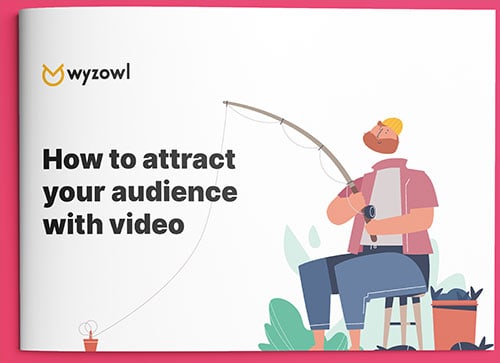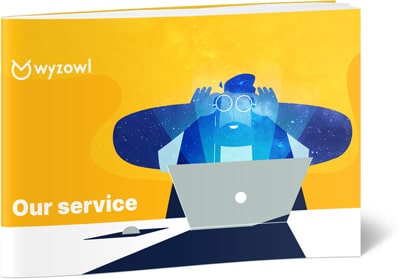Last updated on 27th November 2023
Sick of wasting time and money creating new videos over and over?
Repurposing existing content is the smarter move.
Based on over a decade of experience creating and repurposing video content, we’ve pulled together 35 GREAT ways to refresh, recycle and reuse your videos across platforms.
1. Turn your explainer video into a video ad
There’s a fine line between an explainer video and an ad. In fact, they can often be essentially the same piece of content.
After all, the purpose is the same – you’re introducing an audience to your brand, product, service or idea.
The only difference is that an explainer video tends to live on your website, and an ad is something people see ‘elsewhere’ – on social media channels, for example.
The good thing is that a great explainer video can quickly become a video ad with next to no work.
Often all you need is a different call-to-action at the end of your video, encouraging people to visit your website. Sometimes you won’t even need that.
(As part of our package, we can render two different versions of your video with two different calls-to-action, at no extra charge – just let us know when you start your project.)
2. Turn your customer testimonials into a video ad
We all know social proof is a big deal. It’s been suggested that as many as 88% of consumers trust user reviews as much as personal recommendations.
LOTS of businesses collect customer testimonials and reviews – but then hide them in their sales/nurture process, or on a page on the website.
Many brands use testimonials as ads now – using the logic that it’s more powerful what other people say about your product than what you say about yourself.
Take Dropbox for example. They repurposed customer testimonials into a series of c. 20 second ads and aggressively pushed these in an ad campaign:
3. Post on social media for organic reach
This is another idea that takes basically no effort at all – a slightly different CTA at most.
However it ticks a big box: it helps you reach ‘new’ people on your social channels and funnel them to your website.
Now, there’s no denying: it *is* difficult to reach a new audience organically on social – but, equally, it’s possible. With a good video and some interesting copy in your post, there’s always the chance of getting some good organic reach – and this is perhaps most true on LinkedIn.
And (of course) it costs nothing to try!
4. Create Teasers / cut downs
Simply cutting down relevant parts of your video into small chunks can help you use them as teasers/trailers.
It helps to be aware what you’re looking to do at the beginning so you can write and create the video in such a way that it includes sections that can be ‘cut out’ for these shortened videos in as effortless a way as possible.
For example, when we relaunched our brand in 2019, we cut down the full video…
…into a 15 second cut for use elsewhere.
When launching a new product or brand, you can use the same principle to ‘tease’ details of the full thing, building anticipation ahead of your big reveal.
This principle is often used for ‘sneak peeks’ of new sports kits before they’re fully revealed.
5. Shorten into pre-rolls
This is a mixture of content repurposing and redistribution.
Cut down videos are useful for many purposes, and they’re particularly great for use as pre-roll ads. These are the ads that display before, during or after viewers watch content on some of their favourite platforms.
On YouTube for example, a 15 or 20 second video can be used as a non-skippable video ad – while a 6 second video can be used as a bumper ad.
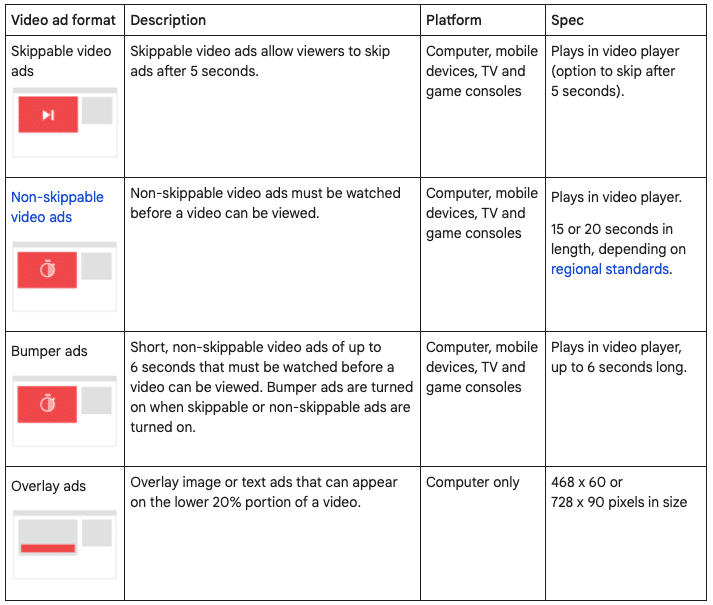
6. Animated graphics and GIFs
One of the best parts of an animated video is that it isn’t just a video. It’s a series of animated graphics, too.
You can capture sections of your video as GIFs using simple tools like LICEcap, or simply ask your animator/animation agency to render out some GIF files for you.
These GIFs can add beautiful movement to your website, and can also be used as microinteractions.
We sometimes use animated graphics (rather than video) on our website for a highly attention-grabbing effect.
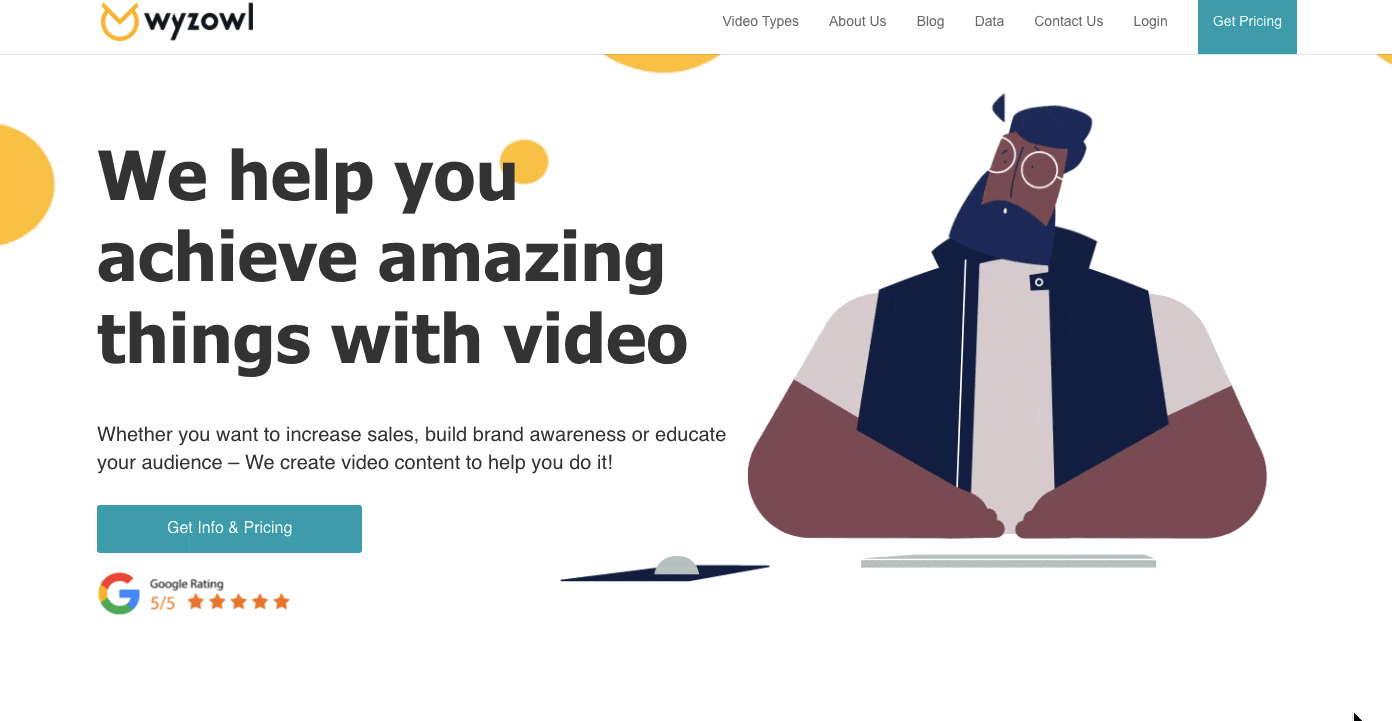
7. Static web graphics
Of course, in many circumstances static graphics can be as effective as animated ones.
The graphics that are created and brought to life in your animated video, can be quickly and easily repurposed to brighten up other parts of your website.
Take Faith in Nature for example. Many of the assets and graphics from their catchy What Would Nature Say? campaign are dotted around their website – both static AND animated. This creates a consistent, bright, vibrant experience for website visitors.

(Psst…When you buy a Wyzowl video, you own all the source files – and we can actually provide you with these so you can make these graphics a key part of your brand, which match your video, at no extra charge.)
8. Infographics
Infographics are a really interesting marketing technique, laying out information, data or just a story in a long, illustrated image file.
Laying out your brand story as a long infographic using source files from an explainer video would be one great example of repurposing.
Or you can create stories around why your product is important, as a sort of ‘trojan horse’ to build the case for your brand. These pieces often have insanely long-lasting appeal and linkability.
Our ‘Power of Visual Communication’ infographic – which you can see below – is an older piece of content but performs consistently well for us, both in terms of traffic and inbound links.

9. Turn it into a podcast
For longer-form video, e.g. webinars, presentations, pitches, it’s often an idea to consider releasing ‘just’ the audio.
We all know podcasts and audio content generally are on the march, and this isn’t a trend that has necessarily even peaked yet. For example in the 3 years to 2021, the number of podcast listeners actually grew by 29.5%.
There are huge platforms such as Apple Podcasts, Spotify and SoundCloud to which you can upload your content, and reach huge numbers of people.
They all have their own price points and further research is required, but if you have the content already, you might conclude that it’s at least worth a try.
And this cuts both ways, too. If you’re already into podcasting, why not consider repurposing that audio content into video?
That could be as simple as uploading the whole thing to YouTube with an illustrated/animated background, actually recording your conversations using a simple camera setup, or actually adding animation a la the famous Ricky Gervais Show.
10. Social media posts
Anyone with any experience of marketing on social knows the demand for content is insatiable.
The pressure of filling up your posting calendar is relentless.
One of the most popular models for social media content comes from the effervescent Gary Vee – the ‘Content Pyramid.’
And it’s all about turning ‘pillar content’ – long-form content like presentations, speeches, long vlogs, etc. – into ‘micro content’ which you can promote across all your social channels.
It’s a very good example of video repurposing, and working smarter.
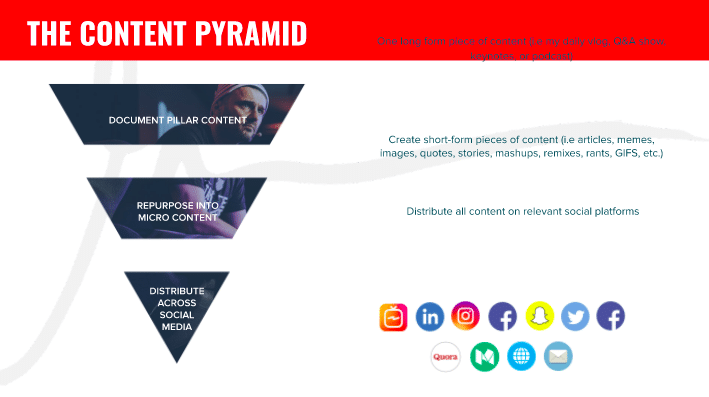
You can read about it here.
But in practical terms, through the lens of content repurposing, this is about creating one ‘mega’ piece of content, and then snipping it up into a variety of smaller bits of content to be distributed across loads of different channels.
Work smarter – not harder!
11. Power up your ‘About’ page
We often find that the effort of distilling your story into short-form can be an illuminating exercise.
We work with our clients to unpack what it is that’s really incredible about their brand, product or service, so we can get this across to a virgin audience in 1-2 minutes.
And they often come out of this exercise with an enhanced understanding of this, which can be slightly different from what they’re already using on your ‘About’ page.
So, we recommend, as well as actually using your video on your ‘About’ page, you might want to look at tweaking the copy in line with the content of that video.
12. Share in a one-off email
Video and email are a match made in heaven.
Short-form video is often used at the top of your funnel – for new visitors, etc.
But amplifying its reach by sharing it with your email list is a no-brainer.
Let your audience know that you’ve created a video explaining your business, product or service.
It might be that it actually unlocks new understanding among people who weren’t clear previously.
The best part about this is, as with some of our other powerful tips in this post, it actually requires basically no extra work, at least not on the content itself. It’s simply another way to get it out there.
13. Build into your nurture sequences
When selling B2B, particularly, the sales journey has multiple steps.
Automated email workflows/nurture sequences are a great way to drip feed information and overcome objections over a period of time.
It’s always a good idea to build at least *some* short-form video into this process.
Why? Because video is shown to be people’s favourite way to learn.
When asked how they’d most like to learn about a product or service, 73% said they’d prefer to watch a short video, compared to 11% (text-based article, website or post) 4% (infographic), 3% (ebook or manual) 3% (webinar or pitch) and 3% (sales call or demo.)
14. Tailor for events
Attending an expo or exhibition with a stand? Maybe you’re presenting on stage about your business?
Either way, video can be a great way to stand out at an event, and – again, not to be repetitive, you’re utilising work that’s already been done!
Expo stands with video built-in – e.g. on a TV or monitor at your booth – is a great way to catch the eye and engage passing footfall. These events are often busy and it isn’t possible to speak to everyone. If your team are fully engaged with people, the others – who would have sauntered past you – might stop to watch the video and get the gist of your offering instead.
15. SlideShare presentation
If you’re creating ‘educational’ video content, SlideShares are a great way to repurpose and reach a wider audience.
You can turn a video into a slide-by-slide, scene-by-scene flipbook from your video that tells the story without music or voiceover. Adding captions (if you used a voiceover in the video) makes it even more impactful.
If you’re just starting out, the useful thing here is that your content lives on Slideshare.net – a high authority site – and content is often highly discoverable in this way.
16. Charge up your for sales/investment decks
Similarly, look at the documentation and slide decks you use for your sales and investment pitches.
The assets from the beautiful videos you create can easily be repurposed to add colour and style to these (sometimes boring) documents.
17. Blog posts
Creating educational video content? Repurposing that work into a blog post is a no-brainer. It’s often as simple as transcribing the video content – which you can do yourself, or using a freelance transcription service on a site like Fiverr.
The good thing here is that, if you’re writing about a topic that’s relevant to your brand that people are searching for, your content can now be fully indexed by search engines.
Write the best piece of content on a topic and you’ve got a great chance of ranking – and bringing a lot of organic traffic to your site.
18. Webinars
Webinars are a great way to generate leads, build relationships, demonstrate thought leadership and often start sales conversations.
If you’ve got a presentation or pitch, consider turning it into a webinar. It’s essentially a remote version of that anway.
We’ve written a few useful guides to webinar marketing which you can read below…
- Webinar Marketing: Your Secret Weapon in 2023
- Webinar Marketing: How to Plan & Promote a Webinar
- 12 Lessons We Learned From Our First Attempt at Webinar Marketing
But these have been a pretty useful marketing technique for us in the past.
You could chop up your video, slide-by-slide, into a deck using a tool like Google Slides or even faithful old PowerPoint. Write down your notes, get your pitch ready, and the content is essentially done.
Find a webinar platform that suits your needs, market it through social, email and paid advertising where appropriate – and you’re off to the races!
19. Instruction manuals ≈ Instructional videos
This is a bit of a two-way repurposing street.
If you have instructional videos you can use the screenshots and steps in your video to create digital/printable instructional guides.
Equally, if you have instructional manuals you have a great head start for repurposing them into instructional videos.
The key thing in today’s omnichannel world is making your most essential information and tools available in as many different formats as possible, as people simply prefer to consume content in various ways.
A good example of this approach is IKEA. We’re probably all familiar with their paper manuals which come in every box…

But, ever the forward-thinkers, they spotted an opportunity to make the process even easier for some more kinesthetic learners by creating assembly videos…
20. Landing page videos
Landing pages are stripped back, conversion-focused pages. They cut back on the navigation and detail, and instead focus on a clear, single message and conversion path.
Video can be a key element of this approach. The below example, from Salesprocess.io, represents how what’s sometimes called a ‘video sales letter’ can be accompanied by concise copy and a clear call to action, to supercharge conversions.
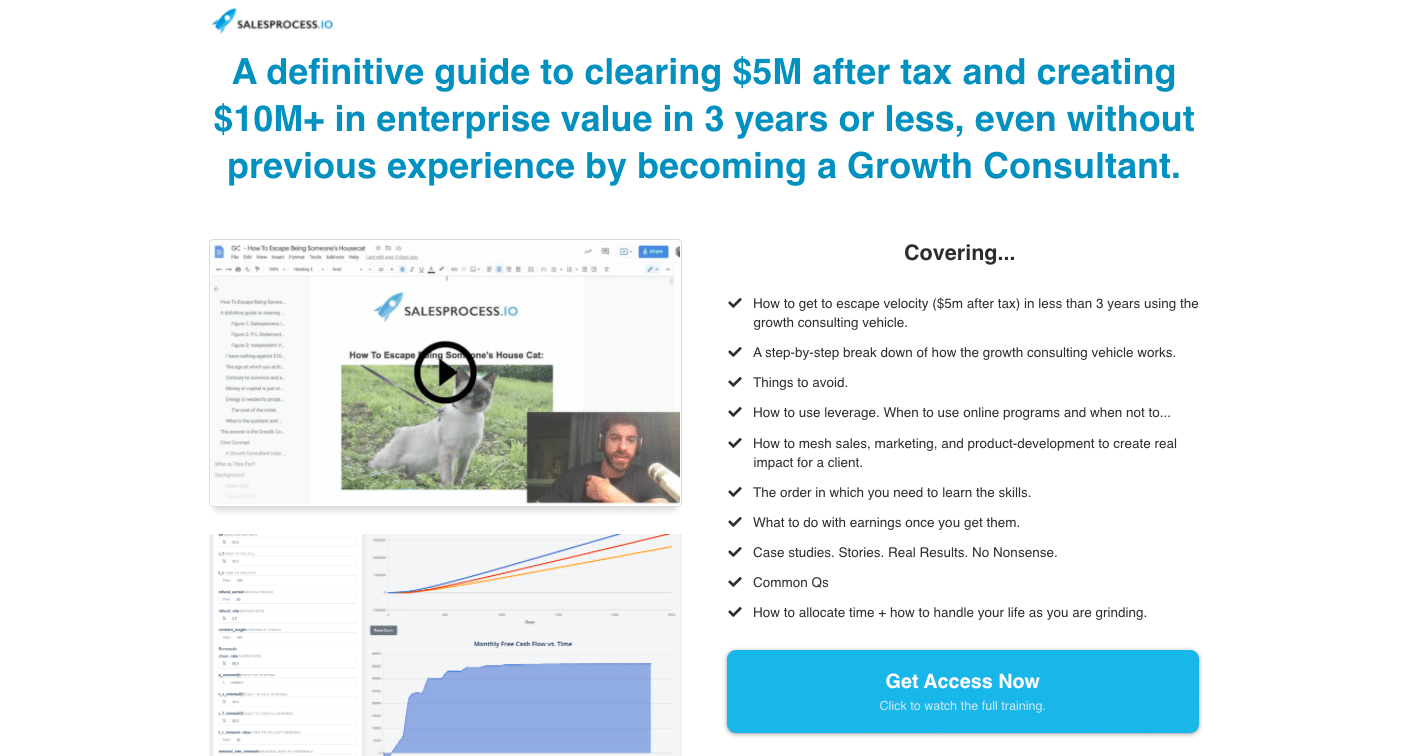
Even if your video isn’t set up to be the main point of the message, why not have it autoplay in the background like this example from Row House? This can add movement and interest to an otherwise static page.

21. Training courses
We live in the information age, and – if you have instructional or educational video content – you could be sitting on a gold mine.
Modular courses and training programs are a great way to share knowledge, build credibility and – actually – make money. The US e-learning market is set to grow by $12.81 billion between 2020 and 2024.
And increasingly, many people swear by this as ‘THE’ best way to sell your expertise and make passive income online.
Even if you aren’t interested in monetising your knowledge, but have a large amount of content, organising it into a training course could be a great way to share your expertise with your audience.
Check out tools like Udemy, Teachable and Podia to create, launch and sell your own courses.
22. Testimonial quote images
If you’ve created testimonial videos, odds are you have footage of your customers saying some pretty nice things about your brand. Which is pretty amazing social proof.
A simple way to get more gas out of that amazing content is to repurpose it: transcribe those quotes. Use them as written quotes on your website. And repurpose them into static or animated quote graphics that you can use as ads, in your printed literature, or further afield.
This can also be a good way to repurpose *old* testimonial footage – before you learned what HD cameras and lighting setups were! – because you can take the value from what your customer said, and remove the focus away from the fact that the video doesn’t look great.
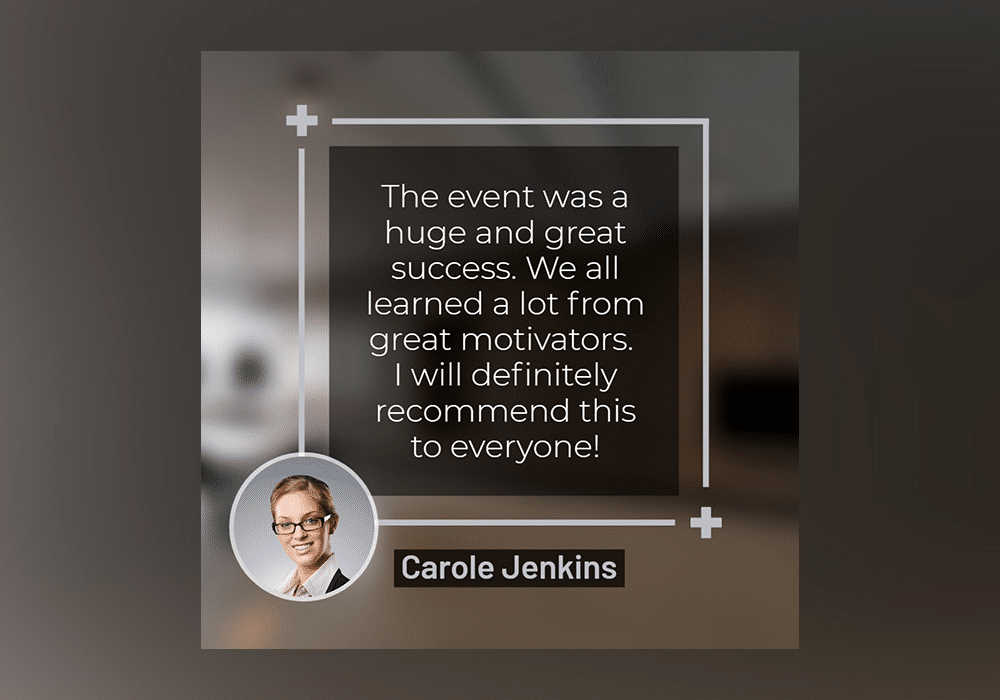
23. Interactive video
Interactive video is a non-linear video content – sort of gamified – that lets users click, drag, scroll and interact with video content.
Creating one from scratch takes a fair amount of planning and creativity, but if you already have a library of video content, interactive video is a great way to put your viewer in the driving seat.
One key feature of interactive video is that your viewers can ‘click’ within the video to access specific sections.
Of course, you can go through the process from scratch and create an interactive experience with entirely new content.
But, while we’re talking about repurposing, there are other creative ways to use interactive video.
So, for example, our friends at PaymentShield created a number of videos designed to overcome the various objections their partners had about selling GI to their clients.
These individual videos were all knitted together into an interactive menu (screenshot below) and, whichever ‘objection’ the viewer clicks, they’ll see a video designed to overcome that objection.
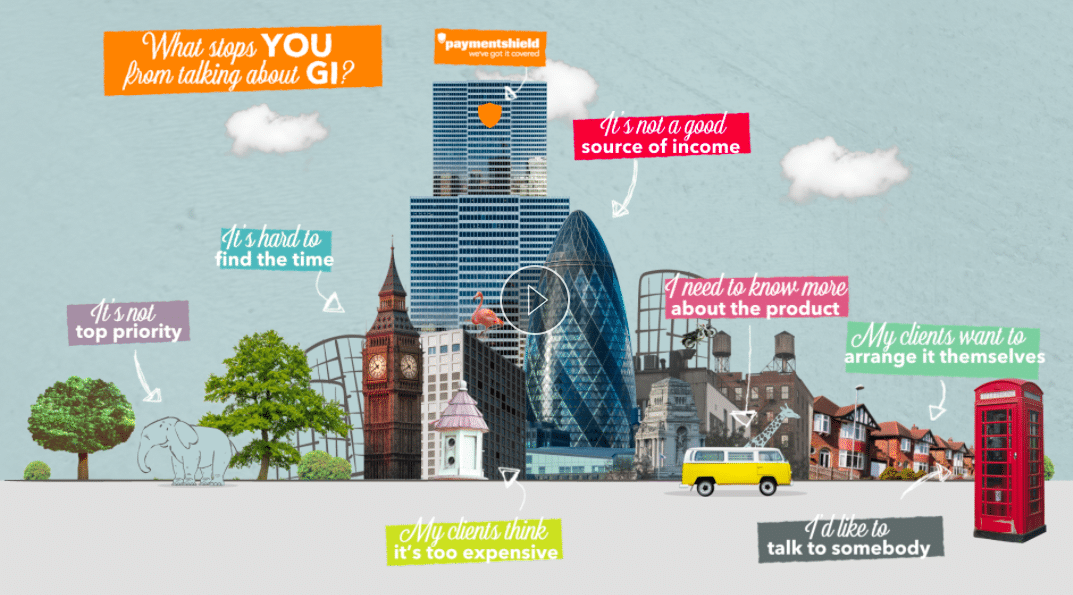
If you have a similar series of video content and are looking for a way to knit it together into a beautifully-designed, interactive format that puts your viewer in the driving seat – this may be the way to go.
Check out our related post, 26 Best Interactive Videos of All Time.
24. Shoppable video
Shoppable video is a specific type of interactive video, aimed mainly at ecommerce retailers.
Shoppable video essentially adds a level of retail-centric information and functionality to your video content. Check IKEA’s effort below, for example – when the ‘+’ element pops up on screen, the viewer can click it to pause the experience, find out more about the product, and potentially buy.

The benefits of this are clear: it gives great flexibility to demonstrate and showcase products with flair and style, but it also ‘strikes while the iron is hot’ from a buyer intent point of view. It gets them from ‘decision’ to ‘purchase’ in fewer clicks, and fewer seconds, which are clear predictors of success in online retail.
Check out our related post, Shoppable Video in 2023: Examples, Tips & Platforms for more nuggets of info about shoppable video!
25. Customer support guides/knowledge base
Many businesses – particularly software companies – have more instructional videos than they really know what to do with!
One smart way to repurpose these is to bring them together on a customer support/knowledge base that brings together everything your users could ever need to know, with video tutorials embedded into instructional copy, screenshots, etc.
26. App Store/Google Play video
Right off the bat, it’s important to say that not all app stores are created equal – they often have their own specs and rules in terms of what is and isn’t allowed to be displayed.
But one unifying feature across all app store platforms is that video can massively improve pre-download education (and improved download/retention rates as a result).
For example, take Android game ‘Okay?’ One review of the game tells us: “The attractive minimalistic game is made of flat, simplistic geometric shapes. The goal is to angle a small black ball so that it bounces off of the shapes on the screen, causing them to disappear.
If you angle the ball properly, it will hit one shape, ricochet off and hit a second and third. Once the ball hits a shape, it will disappear. The goal is to clear the screen of all shapes.”
Or, to put it in a 15 second video…
Games and apps by their very nature tend to be a little abstract and hard to explain. Many products and services are the same.
What this example shows us is how video can completely eliminate the need for ‘word soup’. Don’t tell your audience how something works. They almost certainly don’t have the time or the patience. Instead – show them.
It’s much quicker, less demanding – and builds more realistic expectations.
27. Sales video
Pitching to customers? Potential investors?
Using video is a great way to mix up your pitch.
A slick, professional intro to your brand or product is an amazing way to make a great first impression.
And in the context of a big pitch, it gives your audience something different and interesting to look at, while you take a breather and gather your thoughts.
You could also ‘break up’ your video into slide-by-slide format like with the SlideShare point above, meaning the video content works hard enough to become the building blocks of your whole presentation.
28. ‘Super’ videos
If you’re big on lots of small, short-form videos, you might consider knitting them together into longer ‘compilations.’
For example, if you have 10 separate customer testimonial videos, you might consider E.G. as well as having 10 separate customer testimonial videos, each doing their own thing on their own page, you might also look to create a longer form video: ‘What our customers say about us.’
This could either present all the testimonials or just highlight the best bits. And, as well as being a valuable marketing asset to use, it can also become a strong piece of sales collateral to use in the sales process.
Useful tip: Interactive video lets you break long videos up into chapters so if you need that the video can be navigated easily. This gives you the best of both worlds – the immediacy and brevity of short-form video, with the variety and choice of multiple videos!
29. YouTube playlists
We’re all familiar with YouTube as a channel to consume videos from our favourite brands and creators.
But what isn’t always as immediately obvious is that YouTube is a search engine in its own right. In fact, it’s second only to Google in terms of the world’s biggest and most widely used search tools.
Already uploaded your video to your website? Hosting on Wistia, or another third party platform? That’s great.
But uploading to YouTube *as well* is a great way to amplify reach and discovery.
‘Playlists’, particularly, are a useful tool for organising your video content and making it easy for visitors to your channel to find the content they need.
Each video you upload to YouTube can be added to a playlist to help organise your channel.
For example, let’s take a look at Semrush who do a great job with their YouTube video output. They’ve created a significant, but manageable number of playlists that are clearly labelled to group their content together.
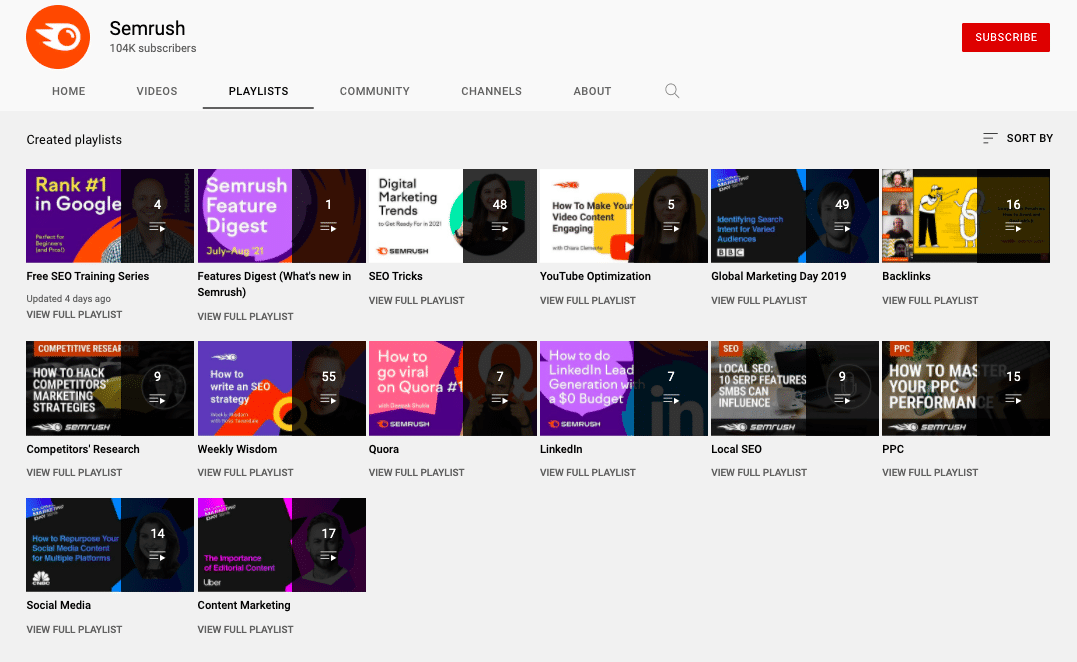
Each playlist features a ‘Play All’ button which lines them up to play in sequence.
Clearly, this helps encourage binge watching and discovery of new content. It’s sort of like ‘cross-selling’ for video content and helps boost the overall engagement on your channel, which can lead to gains elsewhere – a real virtuous cycle!
30. Crowdfunding
This is potentially a pretty niche tip, but if your video marketing goals include raising funds – you might want to consider crowdfunding.
Crowdfunding generates $17.2 billion every year in North America alone, and there’s a clear, statistical imperative for using video: according to crowdfunding platform Kickstarter, projects with video succeed at a rate of 50% as opposed to 30% for those without. Another platform, Indiegogo, reports that campaigns with a pitch video raise 4 times more funds than campaigns without one.
Creating an intro video about your product, service or brand? With minimal extra work, it can be repurposed to a video that gets people excited enough to invest in it!
Check out our related post, 7 ESSENTIAL Tips for a Great Crowdfunding Video.
31. Blooper reels
Even the most seasoned professionals are bound to make mistakes, and many of them are, frankly, pretty hilarious!
And it gets better: the stuff that usually ends up on the cutting room floor can actually play a key part in humanising your brand.
It shows you’re real people and can increase the relatability of your content.
When we released a series of educational videos a couple of years back, we made sure to include the bloopers at the end…
And these things can go further, too. Amazingly, people really enjoy watching mess-ups!
Search YouTube for ‘blooper reels’ and you’ll see that many of these videos have literally tens of millions of views. We’re not promising that kind of traction for your bloopers – but they can certainly generate some extra attention and interest in your brand.
32. TLDW
Longer form videos like webinars are great – but the human attention span is SHORT, and, as brutal as it is, sometimes people want ‘the gist’.
Putting in some effort – but without a great deal of technical smarts – you can use simple video editing software to whittle down the truly important stuff and create cut down versions that distil the essence of your video into a much shorter video.
33. Instagram Stories = highlights videos
Those ‘throwaway’ point-and-shoot videos on your Instagram Stories, as we all know, disappear off your channel in 24 hours.
But the good news is, they remain archived – and you can later filter through them, save them out and turn them into highlights videos.
Hit the menu button in the top right of your Instagram app, and then select ‘Archive.’ You’ll see all your stories you’ve ever posted!
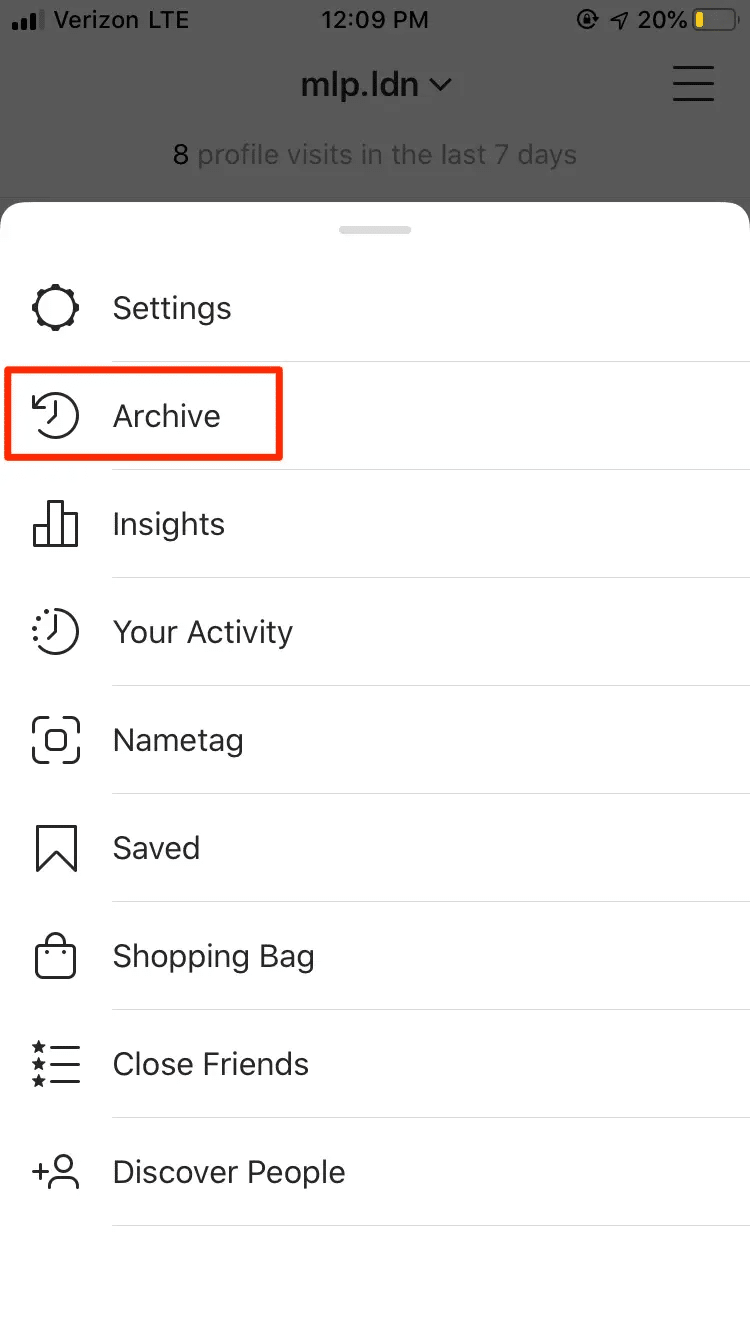
Your highlights might include:
- Your year in focus
- Employee branding/recruitment
- Events you’ve attended
- Customer testimonials/stories.
Any Stories you’d like to leave on your Instagram page for the long-term, you can ‘Highlight.’
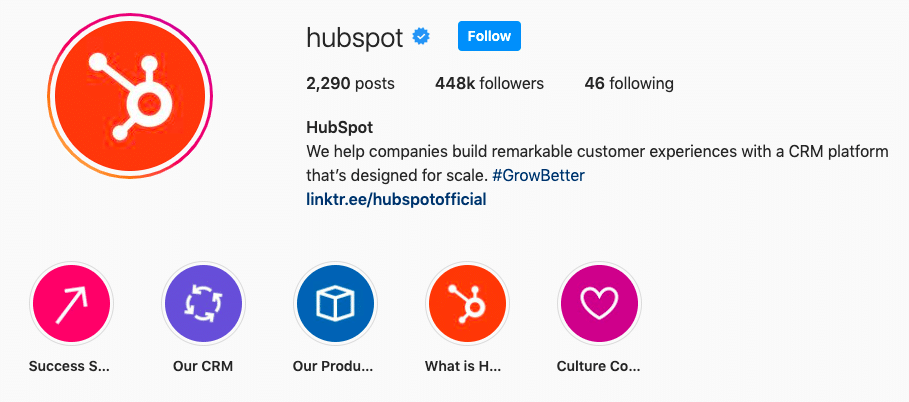
But you can also save the raw photos/videos to your camera roll, drag them into your editing software of choice, and create highlight videos to be shared beyond Instagram.
34. Logo intros/outros
A key component of most animated videos will be the intro/outro. Certainly, in the vast majority of videos we create for our clients, we create an interesting transition with their logo.



The good thing is that this bit of animation can be pulled out of the original video, and used to add a professional start and end to all your video content – as well as being used for graphics beyond video, including on your website.
Compared to the investment in an animated video, much of the video content you create might actually be quite rough-and-ready, using a webcam, phone or screen-recording software to quickly create vlogs, guides, etc.
A professional logo intro/outro can give this content – however rough-and-ready – a professional, well-branded feel.
35. Create an image/graphic carousel
Image carousels look different depending on where you find them – they’re a web design trend that have also gained popularity on social tools, particularly Facebook and Instagram.
But basically an image carousel is a sort of slideshow of images, which users can select by clicking a button or swiping forward or backward through them.
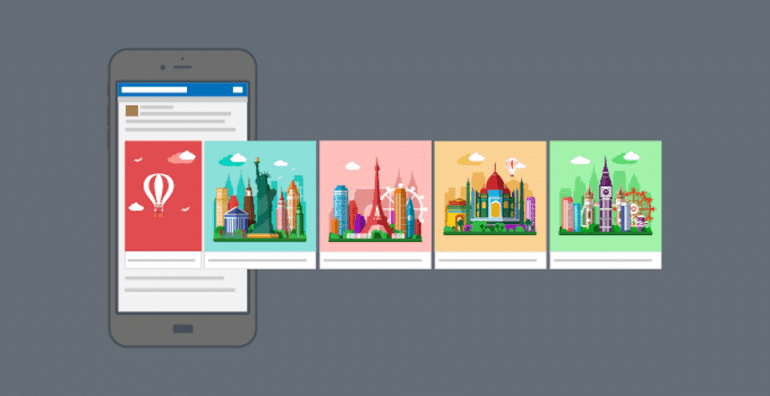
On Instagram, for example, you can post up to 10 photos or videos that their audience can swipe through.
Carousels are great because they let you tell stories in the same sequential way that you can with video.
Using screen grabs from an explainer video or product demo is a great way to use static images to tell a great story.
Thanks for reading
Hopefully in this post we’ve given you some inspiration. If you take just one thing away from reading, we hope it’s the idea that creating one piece of content is just a starting point.
The work you invest in creating great content can be multiplied with comparatively little effort and a small amount of ingenuity, amplifying its reach and impact across multiple platforms and audiences.
Good luck!






